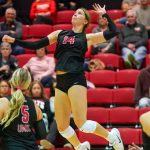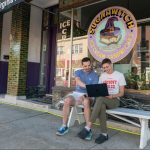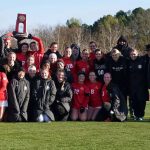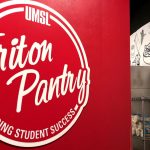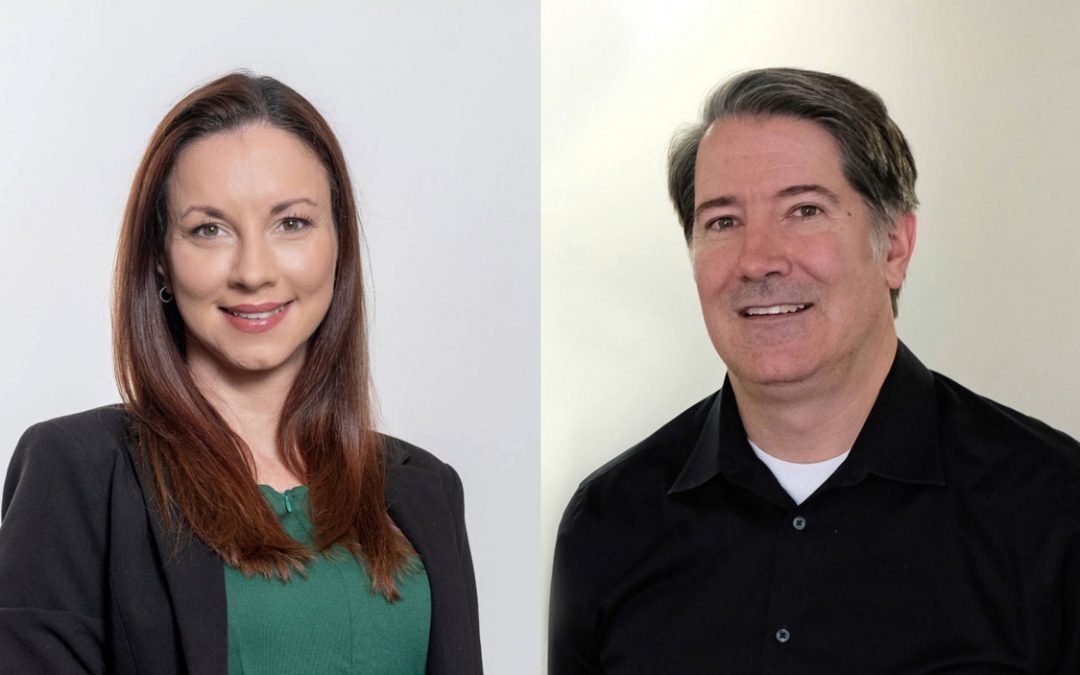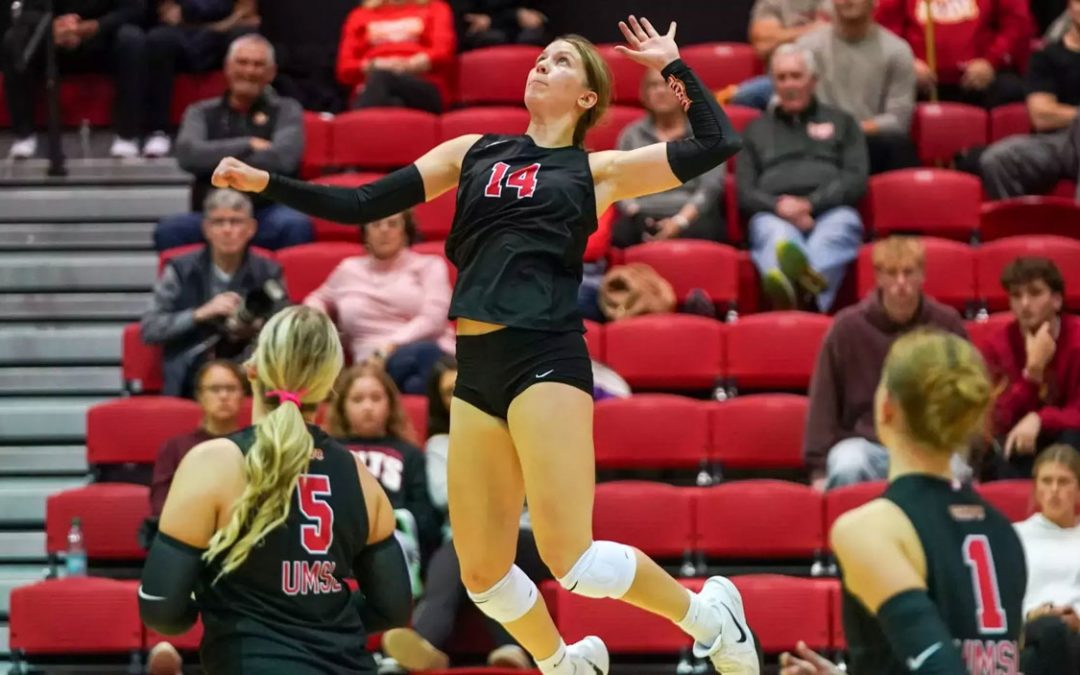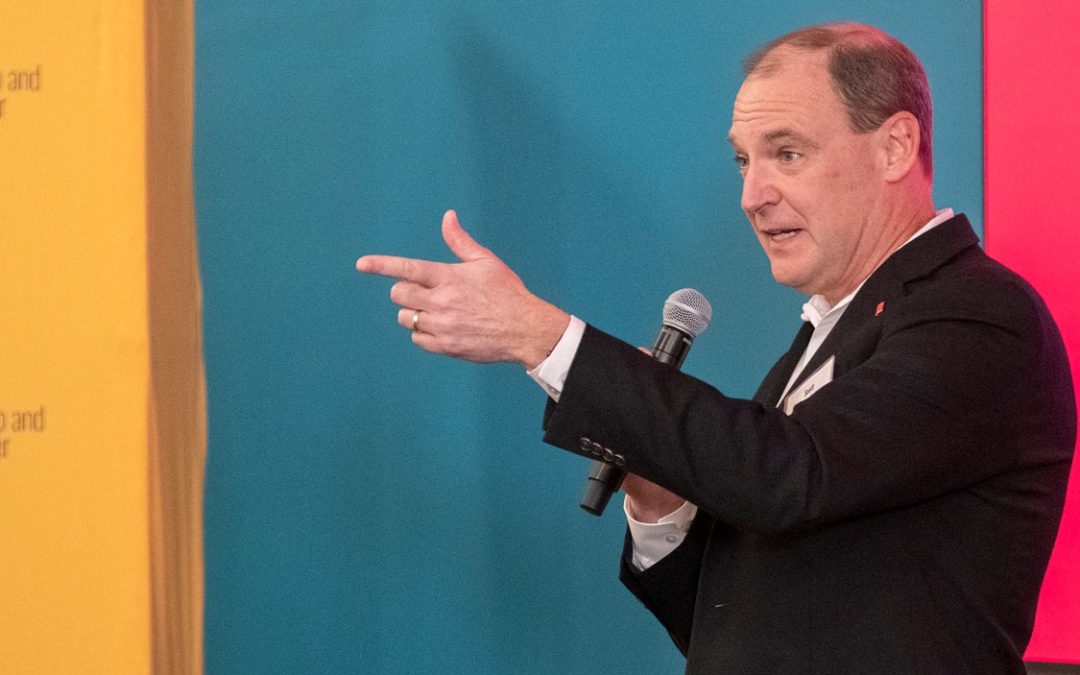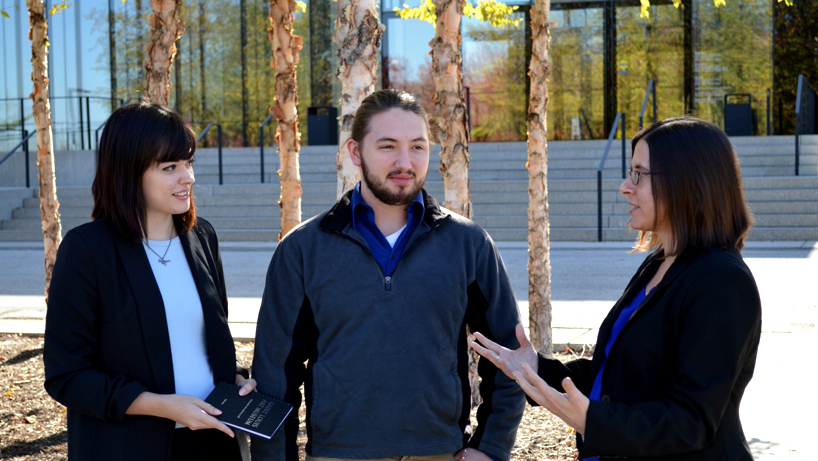
Upperclassmen Abby Naumann (at left) and Seth Huntington, both students in UMSL’s Department of Language and Cultural Studies, chat with Assistant Teaching Professor Amy Michael during a scholarly gathering at the Saint Louis Art Museum earlier this month. (Photo by Evie Hemphill)
Given the papers, classes, activities and jobs always competing for their energy, it would be understandable if Abby Naumann and Seth Huntington let certain extracurricular opportunities pass them by – especially those requiring they rise bright and early on a cherished Saturday.
But when the two University of Missouri–St. Louis students recently opened emails suggesting they attend a weekend symposium on Japanese art and war with one of their language professors, they were quick to sign up.
“It was an early morning and everything, but it was a chance to come here and spend a couple days with people who are tip-top in their field – and hear them present on what they’re working on right now, which you don’t often get to see,” said Naumann, who is studying both French and Japanese at UMSL. “And if you’re interested in this field, it’s a chance to see what people in the field are doing in their careers.”
For two days in October, she and Huntington experienced the Saint Louis Art Museum’s new exhibition “Conflicts of Interest: Art and War in Modern Japan” alongside UMSL faculty member Amy Michael – and a wide range of scholars in town to discuss the works on display.
Michael saw the event as a unique window, particularly for students of Japanese language and culture, into the world of academia.
“There are so many renowned scholars here in history and art history and literature,” she said just before the symposium’s final session on Oct. 22. “You hear them kind of trying to hone their ideas with each other. They’re asking questions, and you’re seeing how these ideas get refined, how the scholars are taking things into consideration – sometimes pushing back and other times saying, ‘Hey, that’s a really good point. Maybe I need to go back and look into this.’”
Huntington, who is double majoring in German and Japanese and recently returned from a year abroad in Leipzig, Germany, listened with special interest to a session touching on relations between Germany and Japan during World War II.
He said he was fascinated by how the two countries worked together at the time.
“They were such great friends in the terrible things that they were doing,” Huntington said. “There was a discussion about textiles, for instance, and they were showing a lot of kimonos with swastikas on them.”
Most of the exhibition, which is on display at the museum through mid-January, concerns imagery depicting Japan’s rise to power in the century prior to Pearl Harbor – an era of Japanese history not well known among most U.S. citizens.
“A lot of times when Americans focus on Japanese war history, we’re focusing on World War II because that’s directly relevant to our experience, but this is more focused on the conflicts when Japan was first emerging as a world power,” said Michael, who is an assistant teaching professor of Japanese in UMSL’s Department of Language and Cultural Studies.
On the first day, she and the students started by exploring the exhibition before the symposium actually got underway. Then, as different conversations during the event deepened their understanding of various works on display, they kept returning to the exhibit space for another, more informed look.
“Of course we’d had our own impressions that were obviously more shallow,” Michael said. “But then now that we’ve learned more we notice the details that the different speakers talked about.”
Both Huntington and Naumann found the ways in which Japan drew on other cultures instructive for their studies and as they reflect on their own culture – particularly the ways in which art, politics and war intersect.
“We’re talking a lot about nationalism and drawing parallels to what’s happening in other countries,” Naumann said. “We’ve been thinking about how these works symbolize what nationalism can do to your country and your identity and your history, and it makes you think about what can go on in your own culture.”
Michael was delighted to have both students in attendance with her. She said that even though Huntington and Naumann were by far the youngest individuals participating in the symposium, she sensed they were getting a lot out of the discussions and general interaction.
“When I heard about the ‘Conflicts of Interest’ exhibit and the symposium, I thought, ‘This is awesome.’ It seemed like the session topics would be relevant to undergraduate students – something not so far above their current knowledge that they wouldn’t be able to take something away,” Michael said. “So I thought, ‘I’ll throw it out there and see who’s interested,’ and Abby and Seth were. So we made the arrangements.
“I think it has been pretty accessible in spite of being at the level of a scholarly discussion. A lot of times these scholars are presenting their research to people who aren’t specialists in their field, and the fact that it’s about imagery, also – there’s always something you can take away.”





